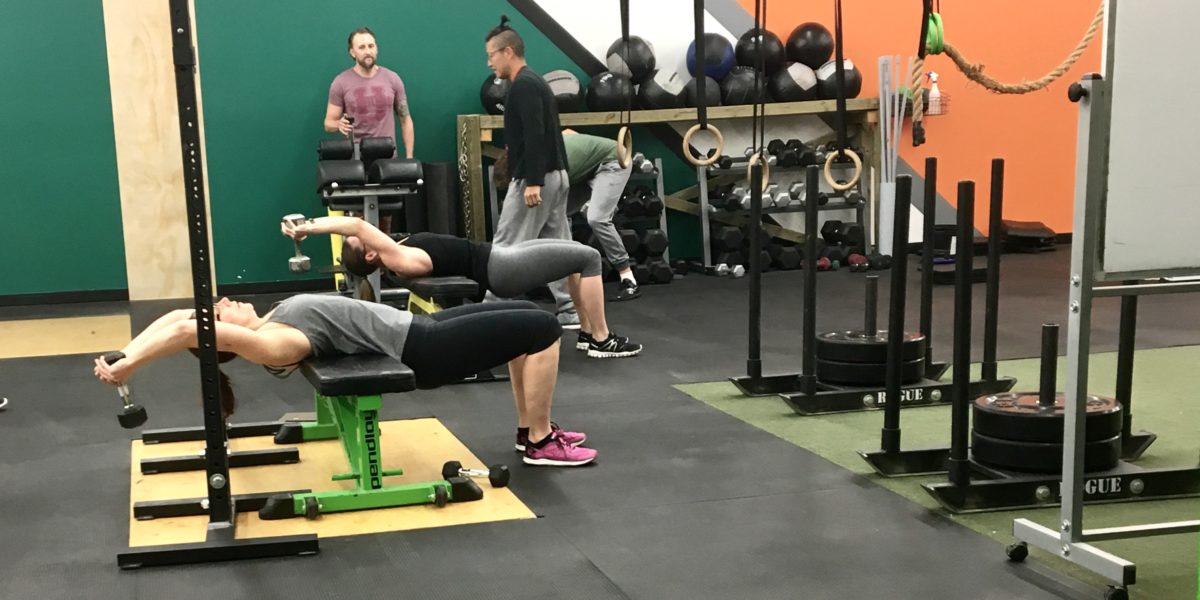- by Coach Brendan
I’ve been writing programs for mixed modal fitness training since I started experimenting with different approaches in my own training in 2005.
I remember looking at grids of performance markers and making attempts to create programs for myself that would help me to incrementally progress toward outcomes such as a 70 second 400m run simultaneously alongside a body-weight snatch (that used to be a big deal).
When I first got the opportunity to program for large pools of athletes (40-60) in 2008, I had to navigate through the chaos of what people said they wanted, what their actions actually indicated they wanted, trends in progress and plateau, trends in injury and breakthrough, and the constant day-by-day pressure to create something that was fun enough… hard enough… safe enough… dangerous enough… that they would keep coming back for more.
Only my family knows the sacrifices I made to try and find the signal amongst all the noise. Countless hours reading, researching, practicing, envisioning….
A handful of times I would wake up at 3AM, unable to sleep until I went into the gym to try out the workout that I had programmed for that day.
More than I care to admit, I would be hammering away at the keyboard while babies cried, or played, or went out on walks with Mom (without Dad), because I just had to get this next idea out.
Over the years I conservatively estimate that I’ve written more than 23,000 exercise sessions for groups and individuals that have actually been performed. This doesn’t include the thousands of experiments in program design that were never put on the whiteboard or sent out in an email.
I am a perfectionist. And every one of those sessions, you can bet, had a lot of thought and consideration put into it. “How will this session impact that session? How does this improve on last time we did this?” etc. etc. etc.
Group programming is hard.
The pursuit of a perfect group program has consumed thousands and thousands of hours of my consciousness.
Anyone who says they have the perfect group program has learned enough to be confident they know something – but not enough to know that they haven’t, in fact, learned anything much at all.
I cannot write a perfect group program.
But everyday that I work on the program for Sublime, I get this sense that we are getting closer.
The Sublime Method 3.0 is the latest movement toward the perfection we will never reach.
It is a culmination of over 13 years of persistent, almost daily, thought and conversation about what matters most in fitness at each stage of the game.
It has been 6 or 7 years now since I laid out the idea of Foundation, Building, Being and Reaching. I find that “progression” to have withstood the tests of that time, but now the vision for what those things should be is even clearer.
The big breakthrough in Sublime Method 3.0 is the realization that we cannot leave the Foundation untended, EVER. You start every single day with Foundation work.
Unfortunately, it cost me years of physical pain to realize the importance of this. I will not neglect it in myself or in others, ever again.
The second major breakthrough is clarifying WHAT the foundation is. Previously vaguely described as “Lean. Mobile. Balanced.”, now it can be quantified. Movements. Reps. Weights. Scores. Achieve the Foundation goals, and you truly do have a Foundation on which you can pursue any athletic endeavor.
Alongside that is understanding what Foundation is NOT. It is NOT physio, nor is it powerlifting, nor is it anything that does not make you definitively more athletic than you were the day before. This will be a hard pill to swallow for some. But it is not that big a deal. The world tells you to care about Back Squats, Deadlifts and Bench Press. I say you should care more about full range of motion split squats, snatch grip platform RDLs and full range of motion chest to bar strict weighted chin-ups. One group of exercises makes you InstaFamous, but also a slower runner and prone to injury outside of lifting anything exactly 8.75” off the floor; the other turns you into an athletic beast, as close to invulnerable as a human animal can get. As a bonus aside, some of them are even sexier than the first group and will come with their own InstaFame.
The third major breakthrough is clarifying WHAT we are building in the Building program. It is the performance of olympic weightlifting and olympic weightlifting alone. A person who masters Foundation and layers on top of it a sound (and minimalistic) program of olympic weightlifting is ready for contact, ready for impact, ready to push their weight around. They build an athletic and powerful strength that carries well into just about any endeavor where it is necessary to be forceful against external load (including that of other bodies). In previous versions of the program we had too many distractions and not enough maintenance of the Foundation. The new “Building” athlete will feel better, move better, be healthier, and will still crush it on the platform and on the field.
The final major breakthrough is community. Because we all are human animals with the same Foundation needs, we can all work together for at least some of the session even when our goals diverge toward the end.
As I’ve said, it’s not a perfect group program.
But after over 13 years of trying, I’m convinced it is the closest to perfection I’ve ever been.
Trust me on this.
I almost know what I’m doing.



1 Comment